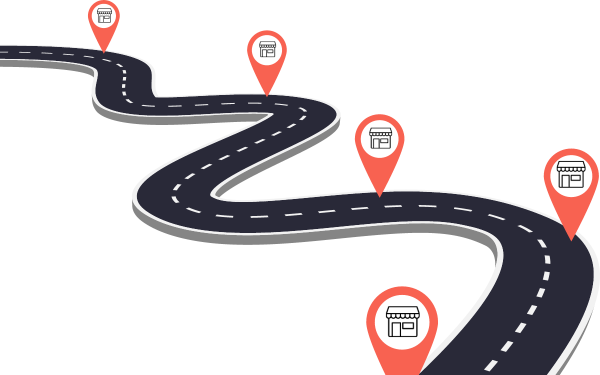High street retail is back in the news again for all the wrong reasons. The collapse of Wilko, with the closure of 400 stores, is another grim addition to a growing list of prominent high street brands that have now faded into history.
A disappointing summer, meanwhile, has seen retail sale volumes dip again after a hot June inspired an uplift. All of this has triggered another round of soul-searching about the future of physical retail in the UK, with John Lewis chair Dame Sharon White calling for a Royal Commission to look into a crisis that has seen 6,000 stores close their doors in five years.
But what’s the answer to turning around the high street’s ailing fortunes? Many retailers feel caught in a perfect storm. Not only are consumers tightening their belts because of the cost of living crisis. They are heading to the high street less because they have so many alternatives online – where they can shop around at their convenience for the best deals.
One man who thinks he has a potential solution is John Hoyle, CEO of Sook. Sook is a pop-up retail business that rents out spaces in prime retail locations on a flexible, short-term basis.
So what is pop-up retail, and how might it solve the existential crisis facing the high street?
Airbnb for retail?
Writing in Premier Construction News, Hoyle explained his view that retail’s biggest problem is the outdated leasehold model that benefits landlords with long-term, expensive rentals, to the detriment of both retailers and consumers.
“This approach [has] resulted in monotonous high streets, excluding a wide range of potential occupiers, from online brands to community users,” he writes. “We need to reimagine the utilisation of physical space and create a more flexible, inclusive, and efficient industry that embraces innovation and adapts to the changing needs of retailers and consumers.
“Taking inspiration from platforms like Airbnb, a similar principle can be applied to retail rentals. This can be achieved through approaches that allow fractional leasing of shared shop premises would enable greater access for occupiers and generate more revenue for landlords. By offering digitally connected, flexible, and pop-up spaces, retailers of all shapes and sizes can experiment, engage with customers, and establish their brand presence in a low-risk and cost-effective manner.”
Is it viable?
It sounds like a radical idea. Our conception of physical retail is defined by a one-store, one-brand/retailer model. Even in shared retail spaces like department stores and markets, the concessions and stallholders tend to have their own fixed spaces.
But as Hoyle argues, how much of this is down the landlord-friendly economics of whole-premise rentals?
In terms of practicalities, there’s not much stopping physical retail switching to a more flexible model where spaces are shared and ‘pop-up’ vendors become the norm. It certainly makes sense from a cost-reduction perspective.
And we already have the technology to do it. A lot gets said about the way digital technology, especially the internet and digital communications, is decoupling human interactions and transactions from physical locations. Tech also has the power to help us reimagine how we use physical space.
Flexible POS
In retail, for example, recent innovations in POS technology are perfect for supporting the pop-up store concept. Mobile POS provides a location-independent alternative to fixed POS installations, a great analogue to the entire pop-up store concept. Different vendors would only have to bring their tablets as and when they use a particular space.
Alternatively, shared spaces could be fitted with fixed POS infrastructure for any and all vendors to use. With modern cloud-based POS software, operating systems and data don’t have to be stored locally. As with the coworking and hot desk models that are reshaping how office workspaces are organised, multiple users can safely and securely use the same terminal using unique log ins to access unique platforms in the cloud.
Alternatively, perhaps one day we’ll see a new kind of ‘co-retail’ space emerge, where vendors sell their goods at pop-up stores, and payments are handled centrally by self-service kiosks that automatically credit the right vendor’s account depending on the item or code scanned.
What most observers agree on is that physical retail will need to evolve to survive. Whether it’s the pop-up concept or otherwise, there’s a critical need for creative thinking around future vending models. But whatever those ideas might be, we can be confident the technology is already there to implement them.




